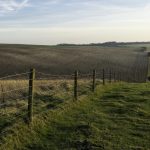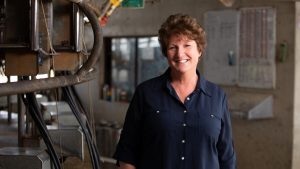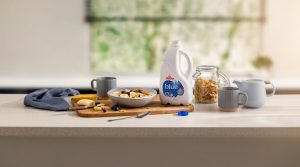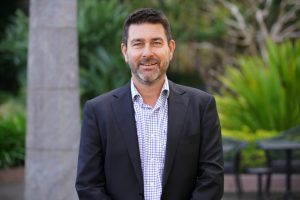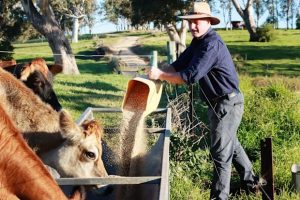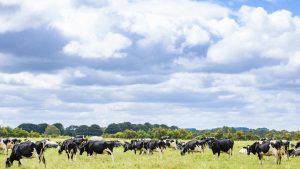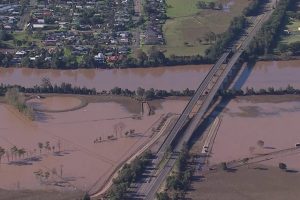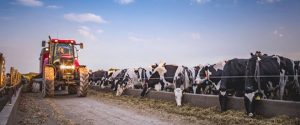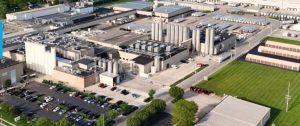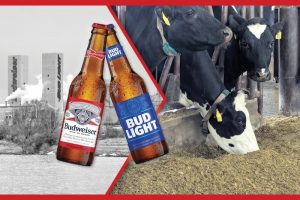
Changes made to the dairy operation – such as adding a feedpad, implementing other feeding infrastructure or milking more cows – can have impacts downstream on the farm.
Sometimes there are dairy systems where effluent modifications have not kept pace with other on-farm changes.
For example, a typical dairy farm with a 200-head cow herd and spring calving may still have an original two-pond effluent system that was constructed several years ago.
At the time, this effluent system had more than enough capacity to store effluent for the storage period for this size herd.
But if the herd has slowly expanded in recent years to 300 cows and a split calving, the extra cows being milked – and milking during the winter months – will have now put a lot more pressure on the effluent system.
In this example, it could be assumed that as well as the increased herd size and changed calving pattern, modifications would have been made to the dairy.
The milking platform may have been extended, the concrete holding yard area increased and/or there could now be an earthen feedpad near the dairy.
All of these changes have a cascading effect on the effluent system.
The farmer may be managing the effluent system well, although it can be hard work and the second pond may require frequent attention to ensure it does not overflow.
The first pond may be silting-up quickly and require more frequent desludging and application to pasture using contractors.
In this example, an effluent system upgrade is needed to reduce pressure on the system and make management easier.
If this dairy farmer wants to upgrade the earthen feedpad area to a concrete feedpad, then effluent upgrade is definitely needed.
This new feedpad will impact on growth to the farming system and on the effluent system.
Firstly, the herd size has increased and – with extra milking – the cows are spending more time away from the paddock.
This means more manure and urine enters the system and sludge will build-up quicker in the first pond. It will need to be desludged more frequently to ensure it doesn’t become overloaded with solids, nutrients and salts.
Along with this, more nutrients will be entering the system.
There is also more water entering the effluent system because the dairy shed and yard upgrade mean it is taking longer to clean and, therefore, using more water.
The catchment area has increased and is capturing more rainfall, which is flowing into the effluent system.
These factors are increasing the volume of liquid effluent entering the system and necessitating more regular cleaning-out.
Together, the extra solids and liquid are putting a huge amount of pressure on a system that was not designed to meet the new specifications and now requires more intensive management.
If a farmer is considering an upgrade of an earthen feedpad to a concrete pad, there are other implications.
For the original earthen feedpad, the farmer would be cleaning the pad by dry-scraping it periodically and stockpiling the solids on a bunded concrete pad. Any liquid produced would be directed back into the effluent ponds.
The dried stockpile would have been applied to paddocks a few times a year.
When the concrete feedpad is installed, the farmer has more options available to clean it and to contain the effluent captured on this area.
The pad could be cleaned with fresh water or recycled water from the second pond, or could continue to be dry scraped.
If it is going to be cleaned with fresh water, this will add more water to the effluent system and increase the required size of the effluent storage pond.
If using recycled water, to ensure there is enough available for washdown, the pond will not be able to have as much irrigated out of it. This will reduce the storage available in the pond.
The increased catchment area and increased manure and urine loading will also increase the pressure on the current undersized effluent system.
There may be options to alter the current effluent system to ensure there is enough storage for the new scenario – or the solution may be to build a separate effluent system for the new feedpad.
It is important to remember there is likely to be more waste feed entering the effluent stream from the feedpad than from the dairy.
This could be allowed to enter an effluent pond or solids ditch directly or some type of solids’ separation could occur before getting to the effluent storage pond/s.
There are many options for solids separation, including trafficable solids traps; rotary screens; elevated screens; and screw presses.
There are also some emerging technologies coming on to the market.
Each of these options have different upfront costs and requirements, and various levels of management requirements and maintenance costs.
It is important to remember that systems need associated infrastructure – such as drying pads – so these should be factored into the decision.
Some options will add a greater level of complexity to the overall effluent system.
Consideration needs to be given to the labour and machinery available and what is required to ensure timely management of the system.
The more complex a system becomes – with more components – the greater the possibility for things to go wrong.
It is worth noting that for any effluent system, whether simple or complex, contingency plans should be considered and all staff made aware of these.
Overall, adding components to the dairy system can have a cascading effect on many aspects of the overall farm, including the effluent system.
This ‘ripple effect’ needs to be considered in the planning stage, and it should not just be assumed that the current effluent system will cope.
Even if the effluent system has enough storage available for the additional effluent being added, it will need to be managed more regularly.
Dairy owners need to think about how this fits into the running of their overall farming system.
Different systems will suit different farms and management approaches.
It is recommended to seek advice from other farmers, inspect other systems that are already in place and consult appropriate service providers – using the national list of effluent system designers found at https://agriculture.vic.gov.au/livestock-and-animals/dairy/managing-effluent/effluent-system-designers.
These designers have achieved a level of competence by successfully completing the Dairy Australia and Agriculture Victoria Design Livestock Effluent Systems course.
They have specialist industry knowledge and can help with consideration of all options.


